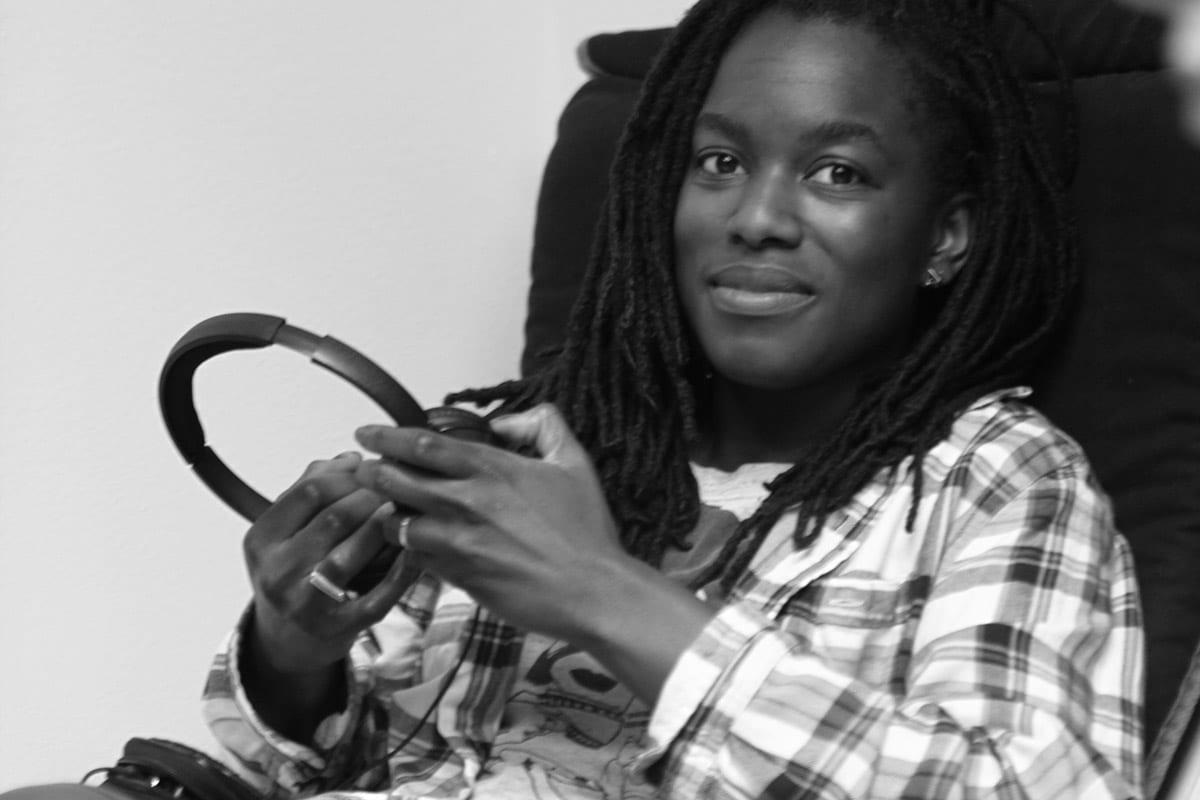
Film as Postmodern Art Form
There’s a direction to filmmaking, a shape. But we don’t know what’s going to come out of it. With the limited resources and time I had, I tried to replicate that with Test Pattern a little bit, but if I could work that way forever I would.
There are moments in Test Pattern that feel like you’re burying ideas or statements beneath the surface to return to later. This can be expressed with a line of dialogue, a non-verbal gesture, the music, or the positioning of the camera and the movement in the frame. Cinema is a powerful means of expression that can be subtle and also direct.
Yeah, just like leaving breadcrumbs everywhere [laughs].
I’m very much influenced by classical cinema, especially neo-classical works, and the German Expressionist movement is important to me. As a practitioner of film, Hitchcock’s work is something I keep drawing back to when I’m looking for ways to express ideas without explicitly telling the viewer. I’m trying to find a way to make you feel subconsciously.

I like to live in subtlety, so if I can avoid telling you something directly, I’m going to do it, and I’m going to use every single tool in my toolkit. If I really want you to know something and I want to underline it, then I’m still probably going to avoid telling you. But I’m going to use every available motif to make sure the point has been driven home for you.
A line that says exactly what the filmmaker means makes me cringe. I hate that, and I don’t think I’m always good at it. My goal is to try to find a way to avoid saying it.
What’s also cool about film as a medium is that even though it was created and it evolved ahead of the postmodernist movement, it’s very much a postmodern art form. The idea of being able to draw from so many different reference points that are also in conversation with each other is one of my favourite things about being a filmmaker.
I’m in conversation with my favourite paintings. I’m in conversation with books, fiction, and non-fiction. I’m in conversation with political moments, with what I saw on television, and with a song I’ve heard. There are all these things that I get to distill. I have a background in sociology, so I like thinking about how people relate to one another, how we’re seen and perceived.
There’s something great about working with an actor and breaking down all the parts, including the psychology, of a human and recreating that for a different kind of conversation. Even though I like realism, I’m not in the business of replicating experience so we can see it again — it should all be intentional. I think about my work as processing stuff that I have consumed and experienced, and I’m trying to draw a conclusion from it by putting this world out there through cinema.
C.G Jung contextualised dreams as a means to solve the problems we cannot solve in our waking state. What you’re describing is an absorption of information and ideas that informs the conversation in your stories, which positions film as being built on dream logic.

